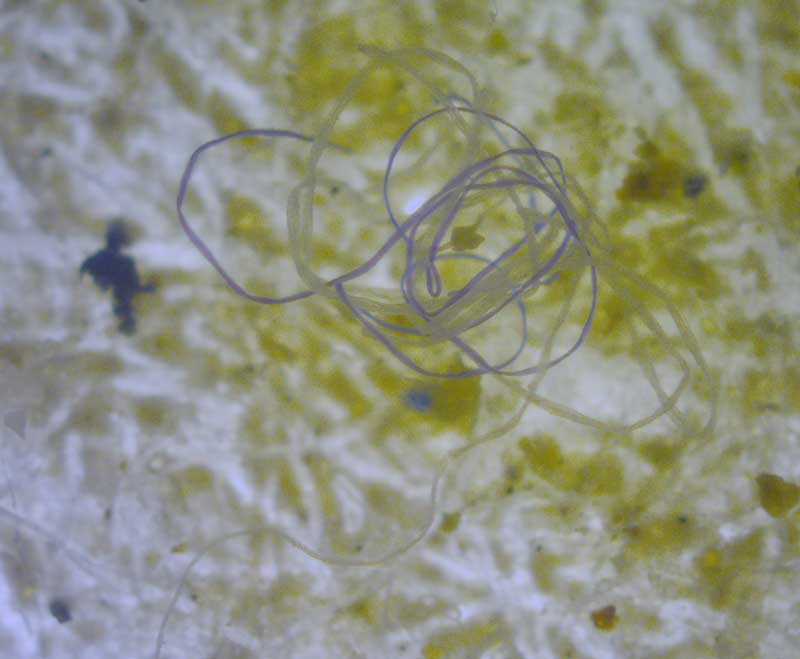Making their way into our food chain
GREAT LAKES—The news keeps getting worse about the ubiquitous microbead, which has spread from human consumption in its use in cosmetics, toothpastes and cleaners to the Great Lakes and its tributaries with the news that in preliminary research, almost all of the fish sampled in a recent study contain quantities of microplastics—and the higher up on the food chain, the more the plastic.
Dr. Sherri Mason, a chemistry professor at the State University of New York at Fredonia who is credited with discovering the plague of microplastics (plastic particles, fibres and microbeads under the size of one millimetres) in the Great Lakes in 2011, has since turned her attentions to studying what this means for the food web.
Since her initial study on the Great Lakes of Superior, Huron and Erie in July of 2011, Dr. Mason and her research team have completed in 2013 an additional survey for the rest of the Great Lakes, including the St. Lawrence Seaway as far as Montreal. Her findings were again astounding: an average of 280,000 particles per square kilometre in Lake Ontario, as an example. In 2011, Dr. Mason and her team found 600,000 particles per square kilometre on average in Lake Erie, known as the most polluted of the Great Lakes, and only 5,000 pieces per sampled area in Lake Huron.

‘The numbers were staggering,” Dr. Mason told The Expositor of the latest samples.
Last year, the professor decided to move her attention to the affect of microplastics on the food web, partnering with her local United States Fish and Wildlife research scientists on Lake Erie. When the researchers do broad scale monitoring on the lake, which involves the gill netting of fish (leading to their death) and aging them, Dr. Mason and her team stepped in to study the sampled fish stomach contents.
“A year ago we started our food web assessment using perch, now we’re at 17 species and a double crested cormorant,” she explained. “Every species, 18, has had plastic in them—every single one. We might have had an individual fish that didn’t, but all of the species did.”
The lower the fish on the food chain, the less plastic, from one to three particles. The cormorants, the top of the food chain, had the most at 36 pieces of plastic.
“We can now establish that plastic is making its way into the food chain,” Dr. Mason said.
She noted that the Great Lakes have typically been harbingers for bad chemicals that like to cling to plastics.
“There’s no data, but it’s safe to say that this same bad stuff is probably making its way into the food chain,” the professor added.
Almost all of the Great Lakes states have passed, or are in the process of passing, legislation to ban microplastics, with an NDP MP putting forward a motion to have Canada add microplastics to its list of toxic substances. This motion has gained unanimous support. Ontario, too, is looking to create a similar ban.
“I guess we’ve presented enough of a story that people are noticing,” Dr. Mason said. “I love what I do and it’s very encouraging to see people taking note and making changes—be it at a personal or government level.”
The scientist told the story of a recent talk at a high school, sharing her studies on microbeads and listing some of the products that contain them. A young girl in the audience, who had only the day before purchased a face wash that featured microbeads, was so horrified to learn the affects of these particles she returned the unused face wash the next day. It’s stories like that make Dr. Mason proud of the work she does, she said.
“Microbeads are one aspect of the problem, but discussion on our use of plastics needs to continue,” she added.
What’s next for Dr. Mason? “Sleep,” she laughed. “I want to look at zooplankton and mussels and ‘what are the impacts on organisms once the plastics are ingested.’ As the plastics degrade, what happens to them? We know that the polymers change and there are chemical releases that can perhaps be even more harmful.”
The professor and her team have also discovered high amounts of plastic fibers in the streams and tributaries leading into the Great Lakes, noting that every time a micro or polar fleece garment is washed (these so-called fleece products are made from recycled plastics), 2,000 microfibres are released into the wash water, and back into the water system. “We are finding them (fibres) in enormous quantities in streams and fish.”
“We are also looking at studying the issue across the States, not just the Great Lakes, to show the ubiquity of the issue,” Dr. Mason added. “Taking this to a regional issue to a national issue to a global issue.”
“I’m not pointing fingers at wastewater treatment plants, they are doing exactly what they were designed to do,” she concluded, referencing the plants’ inability to capture microplastics. “It’s our problem.”






